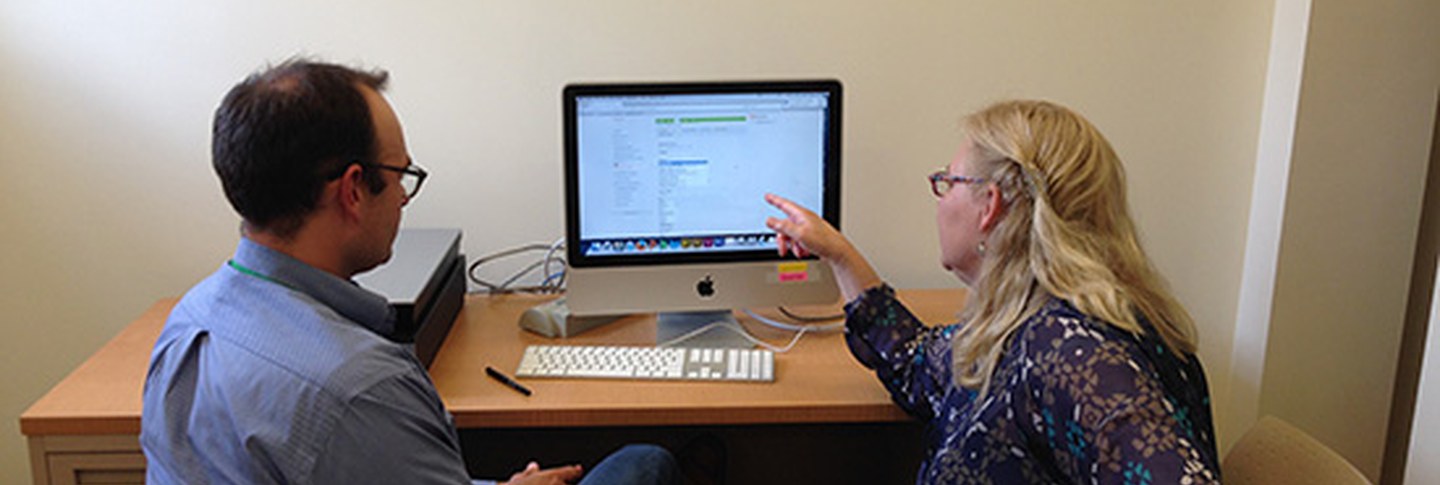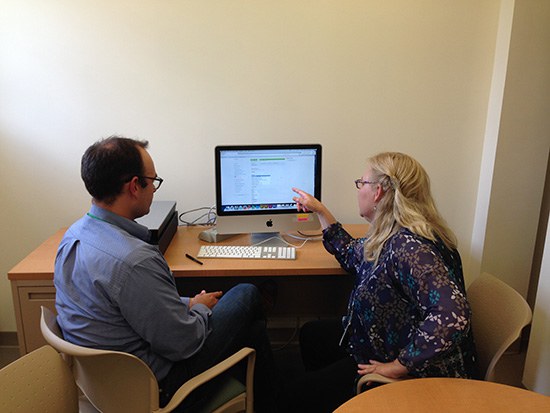The Publications Department at Dumbarton Oaks is using new digital technologies and reaching out to a broader readership than ever before to serve scholars in the fields of Byzantine Studies, Pre-Columbian Studies, and Garden and Landscape Studies. “We’re really committed to supporting those fields institutionally, and there’s no sign that will change,” says Editor in Byzantine Studies Joel Kalvesmaki, “But the means of doing that have changed.”
The department is currently at work on the online publication of the Bliss-Tyler correspondence, which will be complete by this fall, and on a digital catalogue raisonné of late antique, Byzantine, and early Islamic textiles at Dumbarton Oaks. Digital Humanities Fellow Lain Wilson says these digital projects have the potential to deepen readers’ interactions with the published material. Regarding the Bliss-Tyler correspondence, Wilson says, “People may come to it wanting to read about the history of the different collections at Dumbarton Oaks . . . or they might want to read about Edith Wharton, who was a good friend of the Blisses. And all of those different research interests or general interests are served better with the search capability online than they would be with an indexing of those letters in a book.” Wilson adds that the new textiles catalogue raisonné “will have entries and essays, but also potentially video and all kinds of different digital content to really enrich the online experience.”
Recent digital projects have included the redesign of the Dumbarton Oaks website and increasing collaboration with databases like JSTOR to make monographs and articles printed by Dumbarton Oaks available online. “The technology changes constantly, so we’re always open to trying new things,” observes Director of Publications Kathy Sparkes.
Sara Taylor, Managing Editor in Art and Archaeology, is enthusiastic about digital publishing, especially the opportunities it affords for larger projects and the dissemination of research to wider audiences. She adds that online publishing is particularly important in her area of expertise, Pre-Columbian Studies, because many of the scholars in the field live and work in Mexico, Central America, and South America. “By placing [our publications] online, we make it much easier for scholars and students in those areas to access our materials,” she says.
Kalvesmaki also notes that Dumbarton Oaks remains committed to its print publications. “There are some signs that print will not go away, that it’s a format people find value in that digital can’t compensate for,” he explains. “The kind of readers we serve tend to be deep readers. They are not coming to the material as if it’s blog posts or a newspaper or more ephemeral types of communication, and they want to spend quality time with it, so the digital needs are not as great.” Sparkes adds that the extensive use of images and annotations in many of the books and articles published by Dumbarton Oaks renders them difficult to reproduce in a digital format. Over the next few years, she says, the Publications team will continue to experiment with online tools—from apps to digital databases of Maya glyphs—as they seek the best ways to present scholarly work.
Regardless of changes in their methods of delivering content, members of the Publications Department affirm the continuing relevance of their traditional mission as an academic press. “Scholarly presses make available . . . information that commercial publishers will not touch, because they can’t make money from it,” Sparkes says. “It’s all about serving our community. That’s what we want to continue to do.”

